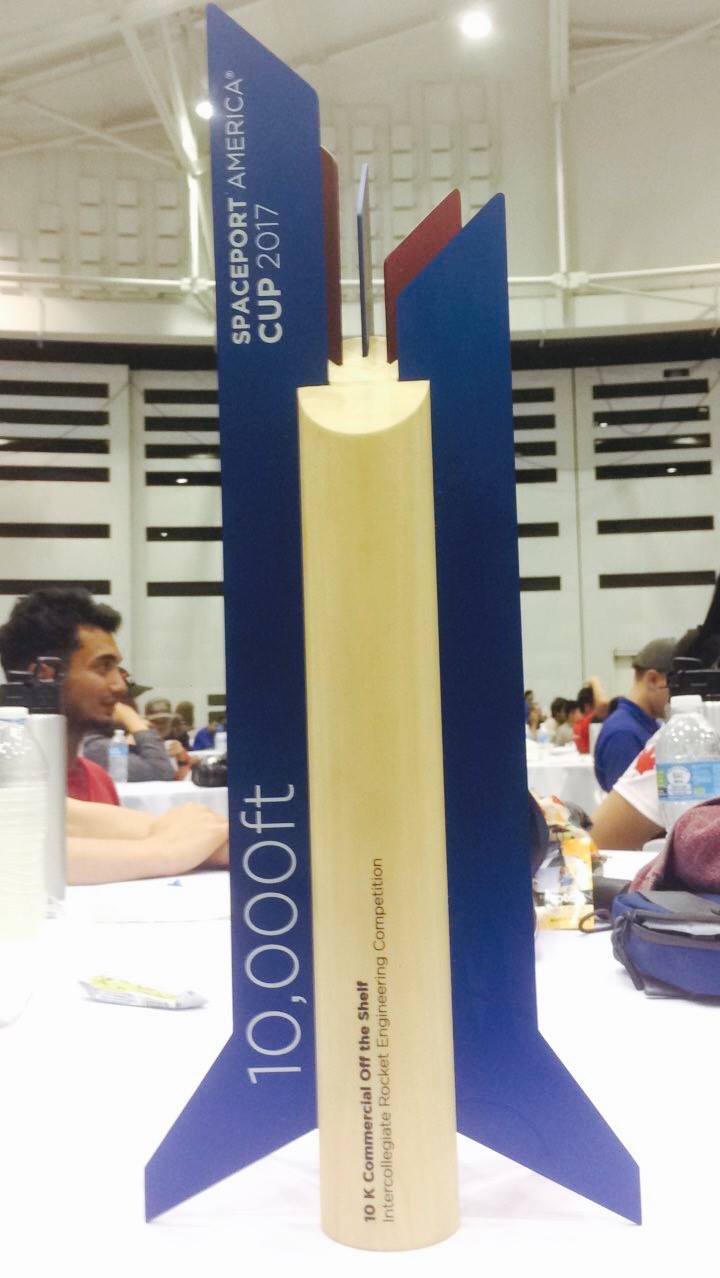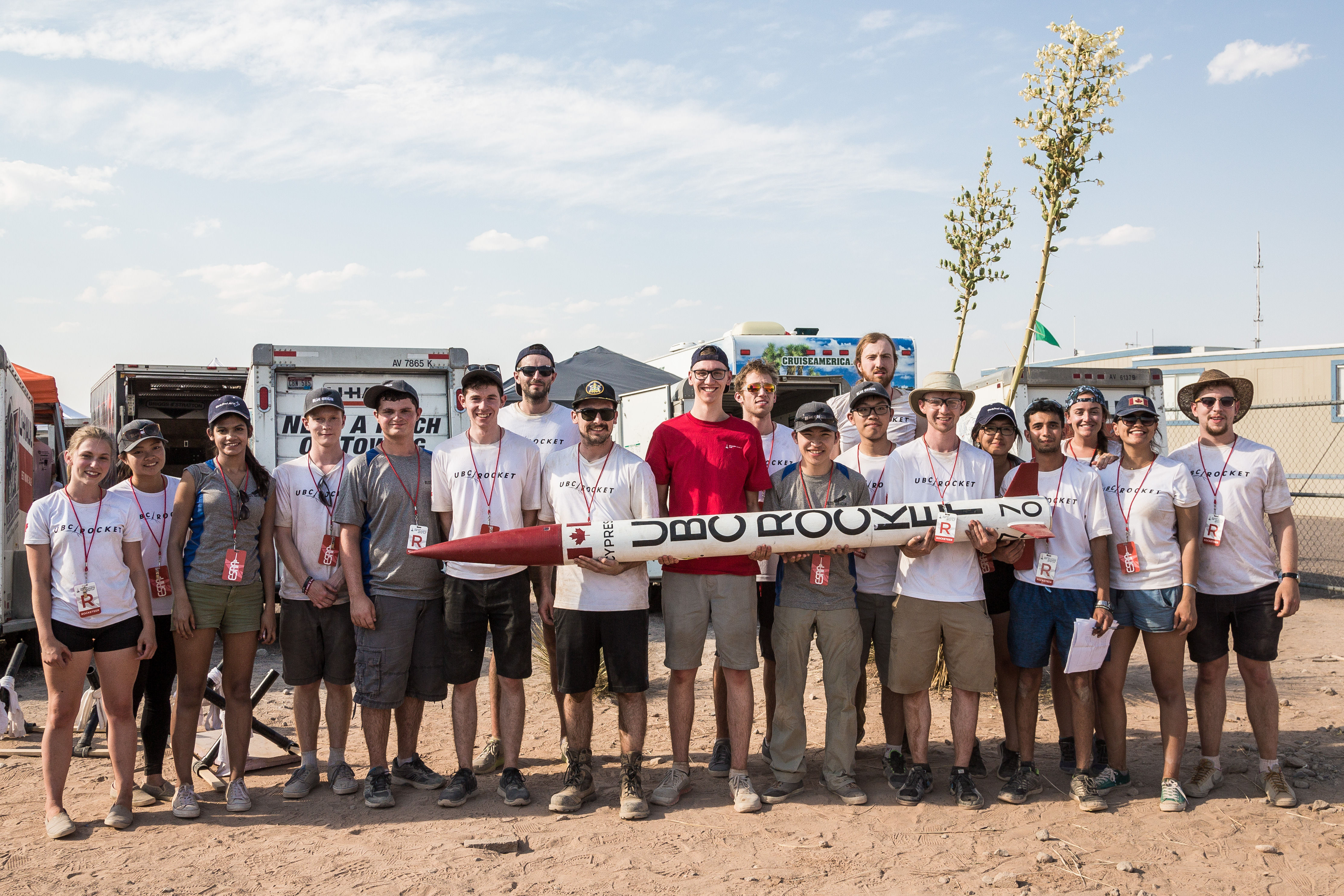Eng Phys students received top honour at Spaceport America Cup
Congratulations to the UBC Rocket Engineering Design Team, including team members from the UBC Engineering Physics Program - Jordan Jones (Payload Team Lead), Arthur Chen, Maryam Baksh, Nishad Jamaldeen (Payload Team Members), Yuqing Du, Carly Jones (Avionics Team Members) and Simon Bambey (Team Captain) - for taking first place in the 10,000 feet Commercial Off the Shelf (COTS) category of the Spaceport America Cup!

For the past year, members of the UBC Rocket Engineering Design Team have been designing and building Cypress - a rocket that stands 2.6m tall, designed to deliver a 4kg payload to an altitude of 10,000ft. On the morning of Jun 24, it launched successfully at the first Spaceport America Cup in New Mexico using a solid-propellant rocket motor. It reached an altitude of 10,053ft and successfully deployed the payload at its apogee. For recovery, it successfully deployed a set of parachutes and came to a gentle touchdown some five minutes after launch. The engineering design, quality of construction and successful flight allowed UBC Rocket to secure first place in the most competitive category of the competition.
"Being on UBC Rocket this past year was an incredibly enriching experience, and Engineering Physics helped provide an excellent background for working with this team," said Ozone Payload Team Lead, 3rd year student Jordan Jones. Maryam Baksh, a member of the Ozone Payload Team, agreed. "Elements from core Engineering Physics courses such as CPEN 221 and ENPH 259 definitely came in handy for designing our payload."
Team Captain of the UBC Rocket Engineering Design Team, also 2nd Year Engineering Physics student Simon Bambey, shared his thoughts on this tremendous experience. "Being in the desert with only the tools we brought from home was an amazing learning experience. It really drove the point home that from the early design, down to the most minuscule manufacturing details, everything needs to be designed and built such that integration is simple and efficient on the day of launch...As I went through the second year of Eng Phys, I often found myself applying skills I learned in the classroom at Rocket and also applied skills I learned at Rocket in the classroom. The two were a great complement to one another both on the technical side and on the leadership/communication side which are both emphasized in the Engineering Physics program."
The team has ambitious goals for the coming years, including a launch to 30,000ft next year, the development of an in-house propulsion system and eventually developing a rocket to fly to the edge of space. You can follow along with their progress on their Facebook page. Interested in joining? Make sure to check out their website at http://www.ubcrocket.com.
